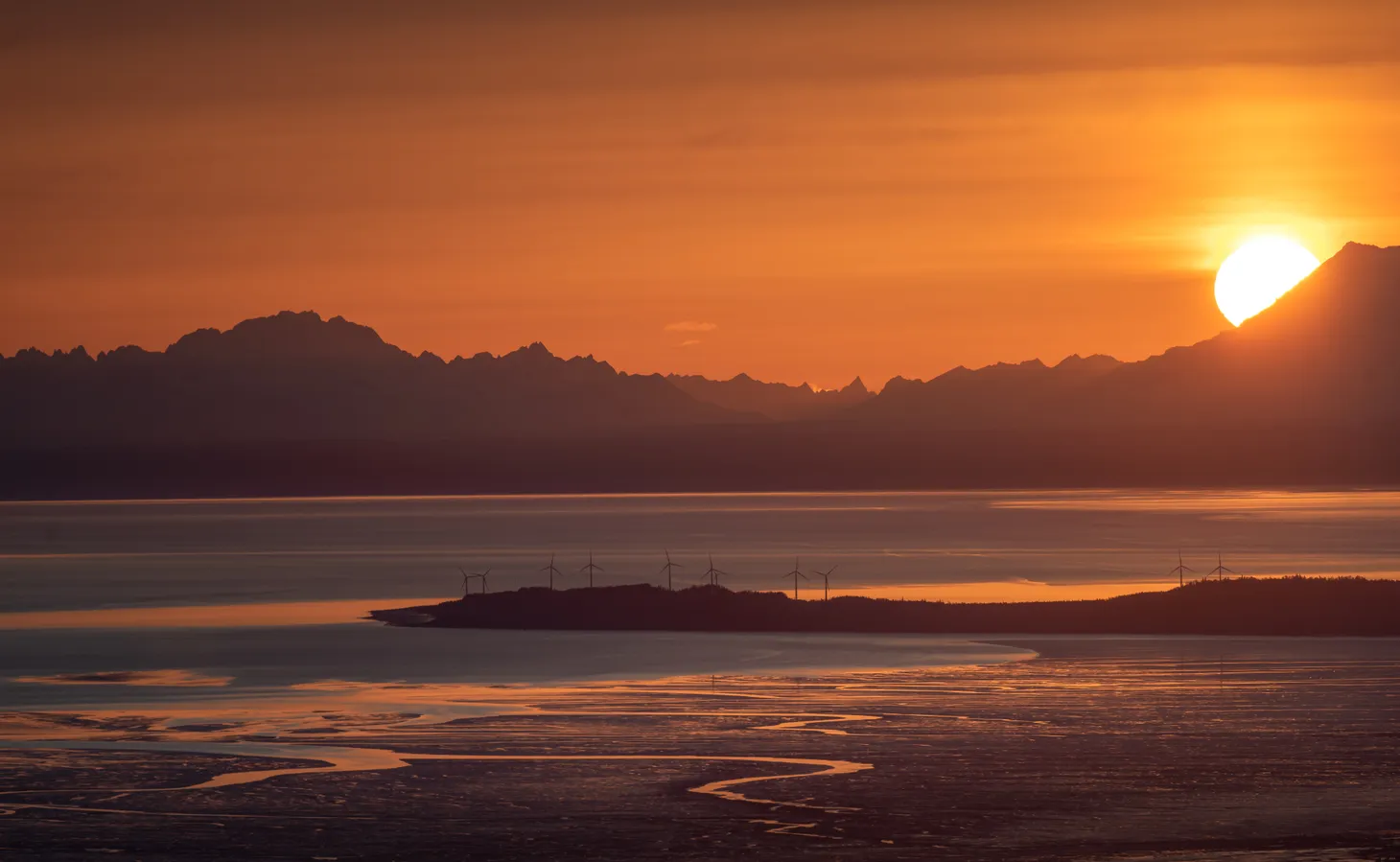Day 57: Willow approved
And a lawsuit has already been filed.

Good morning, Alaska! It’s Day 57 of the legislative session.
In this edition: The rumors on Friday were right, the Biden administration has approved the Willow oilfield project in the federal National Petroleum Reserve on Alaska’s North Slope. With the oil industry still being one of the big economic drivers in the state, the official announcement on Monday was widely heralded as Good News for the state with some major, major caveats. The approval still faces the long road of litigation with groups concerned about the project’s impact on the climate and even if we set that aside, it’ll likely be a new decade by the time the state sees oil revenue flowing into state coffers—and it’ll likely be a hit to revenue in the meantime.
Current post-daylight saving mood: 😴
Congratulations to: Iditarod winner Ryan Redington!
“It means everything to bring that trophy home," Redington said in the race chute after snacking his dogs, hugging friends, family, and other mushers. "It’s been a goal of mine since a very small child to win the Iditarod, and I can’t believe it. It finally happened."
— ADN Iditarod (@ADNIditarod) 8:56 PM ∙ Mar 14, 2023
Willow approved

The Biden administration on Monday gave the green light to the largest oil and gas development project in Alaska in several decades. ConocoPhillips’ Willow project in the National Petroleum Reserve on the North Slope is expected by its backers to create thousands of jobs and billions of dollars in new state revenue (over the course of two decades). The announcement comes after a concerted pressure campaign by Alaska’s congressional delegation and the Alaska Legislature, which unanimously approved a resolution backing the project at the behest of the delegation.
“I kin it to when you go snow-machining. Sometimes you have problems, and home’s just right there and you’ll get there on a dirty carburetor and maybe half-blown spark plugs, but you got there,” said Rep. Josiah Patkotak, I-Utqiagvik and one of the biggest proponents of the project, during the House’s special orders on Monday. “We were able to find a win with that decision.”
The final approval is scaled back from what ConocoPhillips and backers of the project had been hoping to secure. It calls for three drill pads and takes some of the land off the table for drilling. Meanwhile, the Biden administration also announced other limitations on drilling in the Arctic will be coming in the next few months as well as action to remove some 2.8 million acres of the Beaufort Sea from future lease sales.
The Willow approval was met with opposition from environmental groups, who pledged a legal battle over the project’s impacts on climate change. Already, a group of organizations led by Trustees for Alaska has filed a lawsuit in U.S. District Court. They argue the feds didn’t do enough to mitigate the harm to local communities.
“Interior attempted to put a shiny gloss over a structurally unsound decision that will,
without question, result in a massive fossil fuel project that will reduce access to food and cultural practices for local communities,” said Bridget Psarianos, staff attorney for Trustees for Alaska, in a statement. “The laws broken on the way to these permits demonstrate the government’s disregard for those who would be most directly harmed by industrial pollution and ignores Alaska’s and the world’s climate reality.”
The bottom line for the budget wonks
If it is developed, the project is expected to put about 180,000 additional barrels of oil into the trans-Alaska Pipeline System at its peak (the pipeline currently sits in the neighborhood of about 480,000 barrels a day), but because it’s coming off of federal land the revenue picture for the state and Legislature will be a bit more complicated under the current tax regime. The federal government will collect the royalties—a big chunk of the value—with a portion going to the local communities as impact aid.
Meanwhile, the state’s oil and gas production tax is set up so ConocoPhillips can deduct the cost of developing Willow against its taxes from other projects. That means that, according to the most current modeling from the state (which has been generally rosy in recent years), the Willow project will be a net negative for the state until we’re well into the 2030s and several years into production. According to the analysis, which was highlighted by Dermot Cole, the state will see a net loss of nearly $500 million through 2033 and wouldn’t be cashflow positive until two years after that.
The bottom line forecast, which is incredibly volatile because they’re trying to forecast oil prices more than a decade out, would see net revenue to the state in the ballpark of about $3.4 billion through 2043 and $5.4 billion through 2053. The state of Alaska would be the slowest of any affected groups to realize a net positive cashflow from the project.
Beyond the bottom line
I also got to connect with U.S. Sen. Lisa Murkowski to talk about the project after the decision was announced on Monday. She hailed the broad effort of elected officials to support the project, making the case that its economic benefits and long-term revenue will help move the dial in a significant way for the state into the future. She also talked about outreach directly to President Biden.
“I made very, very, very clear that my state needed the Willow project and if there was anything that could help us address our issues more readily than anything else out there, it was Willow,” she said. “I did not relent on that. ... One of the reasons that I decided to run for re-election was because I was so concerned about what I was seeing with the industry up north—knowing how it sustained us—and a concern that we might not be able to advance projects like Willow. It was important to me and I made sure people knew it was important to me.”
And while lawmakers have been united in support of the project, it’s not been exactly a celebration for many Alaskans who are concerned about the project’s impact on the climate, environment and North Slope ecosystem. To those, Murkowski said to consider the alternatives.
“To those who are worried about the climate, let me say just this: We’re all looking towards that day when we transition our world off of fossil resources. We’re not there yet. President Biden said it himself in his State of the Union, we’re going to be using oil for a while longer. He said for more than a decade,” she said. “If we’re going to use that, and we recognize that we are, then why are we not accessing it in some place that has some of the most stringent environmental track records?”
To be clear, the BLM’s analysis of the Willow project suggests it would displace a significant amount of foreign-produced oil but that is also countered in part by what the additional oil would do to the overall market: An increased supply of oil would cause prices to dip (about 20 cents per barrel, according to one figure I stumbled across in the supplemental analysis) and therefore overall consumption of oil would increase. The net impact of it all taken together would be a slight increase in global greenhouse emissions over doing nothing, according to the report.
For Murkowski, who implored the Legislature during her annual address to take steps to materially improve the quality of life in Alaska in order to attract and retain younger people, the Willow project is one of those answers.
“When you have a state like ours where we have seen 10 years of out-migration, we better be thinking about everything we’re doing to make our communities and our state stronger and more attractive and more vibrant and not some burnt-out nothing-happening-in-this-place environment,” she said. “We’ve got to figure out how we make our state that young, attractive, vibrant place that we want it to be. .. It comes back when you have a stronger economy.”
Continued coverage from Alaska
- From the Alaska Beacon: Biden administration OKs Willow Arctic oil project on Alaska’s North Slope
- From Alaska Public: Biden approves Willow oil project, announces new limits elsewhere in NPR-A
- More from Alaska Public: Questions about Biden’s approval of Arctic drilling of Willow? We’ve got answers.
- From the ADN: Biden administration approves development of Alaska’s Willow oil project
- More from the ADN: What Alaska and North Slope leaders, industry, conservationists and others are saying about approval of Willow
- From KTUU: Biden administration approves Alaska’s Willow Project
- The Associated Press: Alaska’s Willow oil project is controversial. Here’s why.
Stay tuned.
The Alaska Memo Newsletter
Join the newsletter to receive the latest updates in your inbox.




